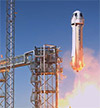Critical Site Selection Factor #4: Occupancy OR Construction Costs
It’s easy to see why occupancy or construction costs are a factor that a lot of people are keeping an eye on...these costs are trending upward.
Q4 2016
Meanwhile, the company reports warehouse rents are on the rise nationally, thanks to record-low vacancies. Speculative completions are on the rise, but net absorption is also quite healthy. As a result, rent per square foot this year is up by about $3 compared with last year.
Not surprisingly, there’s noteworthy variation in construction costs from market to market, typically driven by local economic conditions. A global report from Turner & Townsend, for example, calls the Houston market “lukewarm,” with year-over-year construction costs expected to escalate 3 percent this year and 2.5 percent in 2017 (that includes the full range of commercial and residential construction). The Seattle market, on the other hand, is pegged at “overheating,” with annual cost escalation estimates at 5 percent and 8 percent. New York City is “overheating” too, the report says, and San Francisco is merely “hot.”
Keeping It in Perspective
All that said, for the most part the cost of construction and occupancy is not going to be the biggest factor driving a location choice, consultants suggest. “It’s important, but it doesn’t drive the decision-making,” says Richard H. Thompson, international director, Supply Chain and Logistics Solutions for JLL. If you’re leasing a building, the real estate cost of a distribution center, for example, is 3 to 5 percent of the total operating cost Richard H. Thompson, International Director, Supply Chain and Logistics Solutions, JLL
“If you’re leasing a building, the real estate cost of a distribution center, for example, is 3 to 5 percent of the total operating cost,” he points out. Meanwhile, one might spend up to half of the budget on freight and labor. With that in mind, labor rates and proximity factors are usually going to hold quite a bit more sway. “You’re going to pay more to be in the right spot. If you have two sites that are equally viable, then you start looking at whether one might be cheaper,” Thompson notes.
A similar view comes from Christopher D. Lloyd, senior vice president, Infrastructure and Economic Development, at McGuireWoods Consulting LLC. “It’s going to vary greatly depending on the nature of the project, but if you’ve got to be somewhere, you’re going to pay what the cost is,” he says. “Just because it can be cheaper to build somewhere, it doesn’t mean everyone is going to flock there because of the low construction cost.”
Project Announcements
Eastern Engineered Wood Products Plans Belton, South Carolina, Distribution Operations
02/20/2025
Pennsylvania Transformer Technology Expands Raeford, North Carolina, Manufacturing Operations
02/20/2025
Muskogee Leads Oklahoma in Capital Investment Growth for 2024
02/19/2025
Eaton Plans Jonesville, South Carolina, Transformer Operations
02/15/2025
AeroVironment Plans Salt Lake City, Utah, Manufacturing Operations
02/15/2025
Amazon Plans Salina, Kansas, Distribution Operations
02/15/2025
Most Read
-
The Workforce Factor: How States Are Competing to Build Tomorrow's Talent
Q4 2024
-
NEW NIMBYism: A Threat to The U.S. Economy
Q4 2024
-
Five Strategies to Tackle the Data Center Talent Shortage
Q4 2024
-
2024's Leading Metro Locations: U.S. Cities on the Rise Amid an Economic Reshuffling
Q4 2024
-
Microsoft-Three Mile Island Deal Could Signal Path for Nuclear Power to Strengthen Partnerships with Big Tech
Q4 2024
-
Industries Look for Employees in Nontraditional Spaces Amid Labor Shortage
Q4 2024
-
What to Make of the Rising Trend of Salary Transparency in Job Descriptions
Q4 2024



